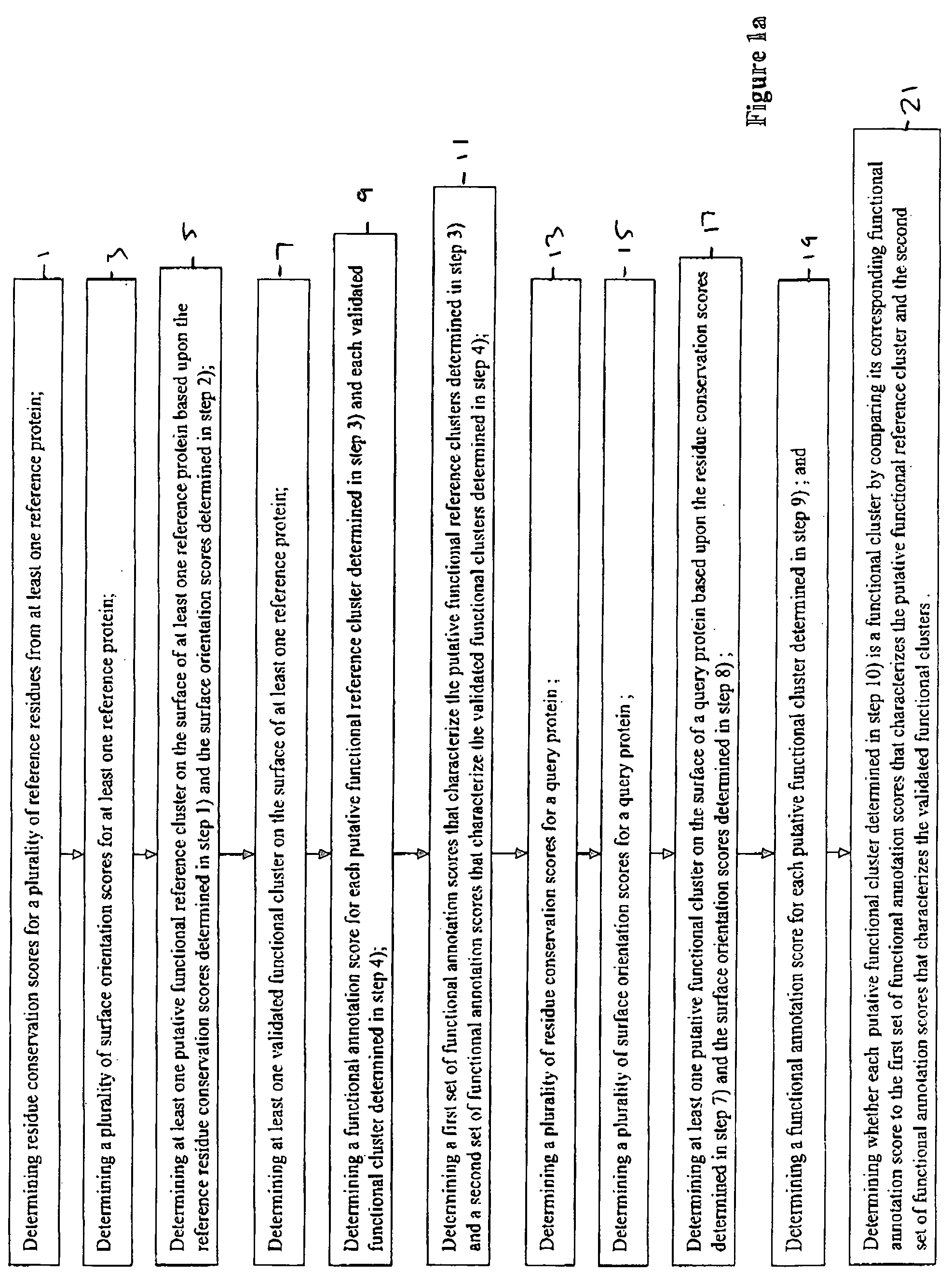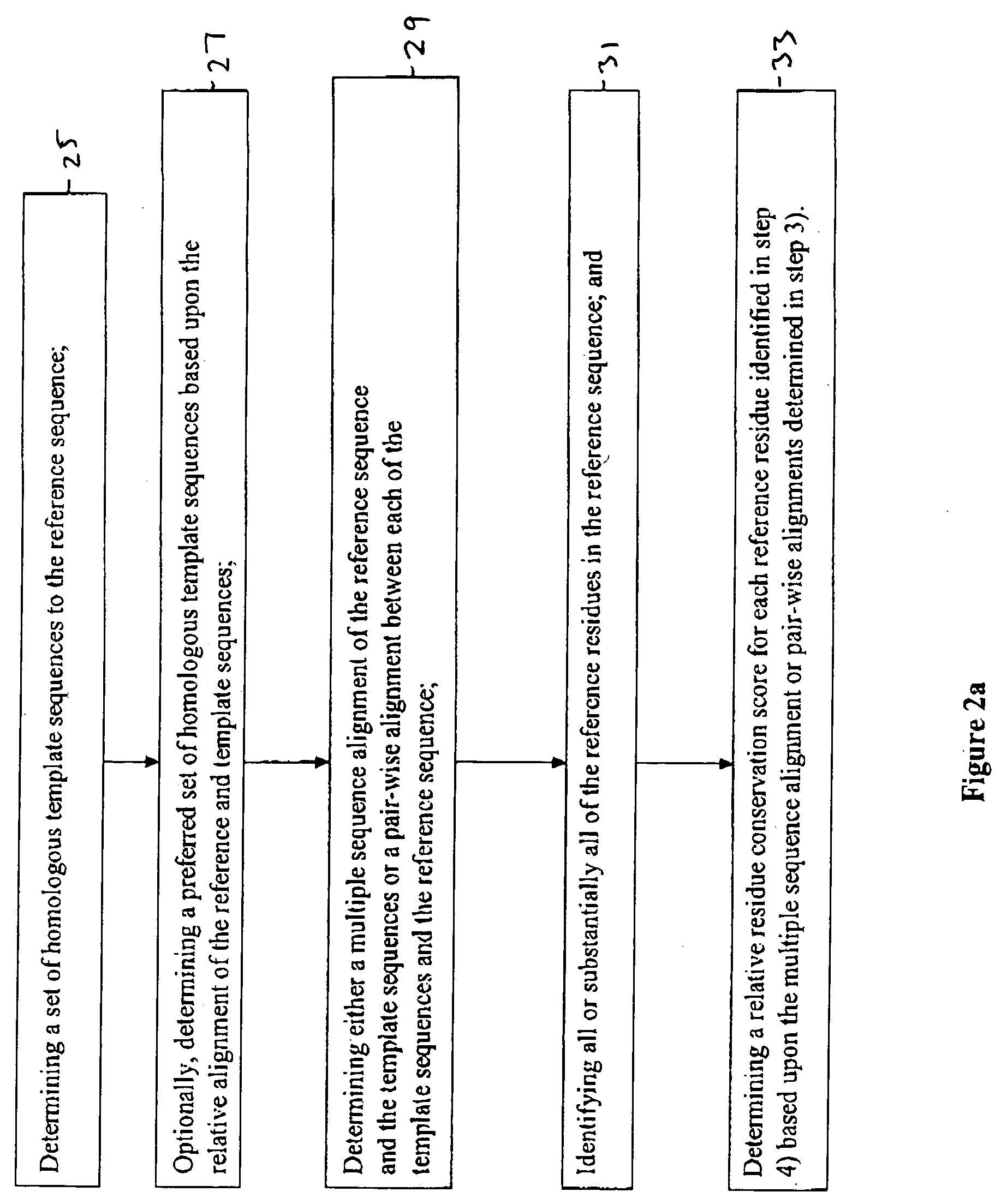Method for determining functional sites in a protein
a functional site and protein technology, applied in the field of protein functional site determination, can solve the problems of sequence comparison methods that are difficult to detect, interfere with the discovery of conserved residues, and sequence comparison methods that are difficult to break down
- Summary
- Abstract
- Description
- Claims
- Application Information
AI Technical Summary
Benefits of technology
Problems solved by technology
Method used
Image
Examples
example
Further Exemplary Functional Site Identifications
[0210] The methods illustrated in FIGS. 1b and 4 were implemented as described in the section entitled, Example: Identifying the Functional Site on PDB:12asA and Determining its Corresponding Continuous SVM Score, to test their ability to identify known small molecule binding sites that have been the subject of recent drug discovery efforts and determine continuous SVM scores for each site identification. Continuous SVM scores were converted into probabilities that such site identifications are correct using the best fit line from FIG. 14 and the method used to generate it.
[0211]FIG. 16 compares the identification of the lead acetate binding site on Ferrochelatase (PDB:1HRK), with a greater than 80% probability that the annotation is correct, using the methods according to the invention, (shown on the left), and the top four identifications made by the state-of-the-art PASS algorithm (shown on the right). The true inhibitor site (PD...
PUM
| Property | Measurement | Unit |
|---|---|---|
| Fraction | aaaaa | aaaaa |
| Fraction | aaaaa | aaaaa |
| Fraction | aaaaa | aaaaa |
Abstract
Description
Claims
Application Information
 Login to View More
Login to View More - R&D
- Intellectual Property
- Life Sciences
- Materials
- Tech Scout
- Unparalleled Data Quality
- Higher Quality Content
- 60% Fewer Hallucinations
Browse by: Latest US Patents, China's latest patents, Technical Efficacy Thesaurus, Application Domain, Technology Topic, Popular Technical Reports.
© 2025 PatSnap. All rights reserved.Legal|Privacy policy|Modern Slavery Act Transparency Statement|Sitemap|About US| Contact US: help@patsnap.com



